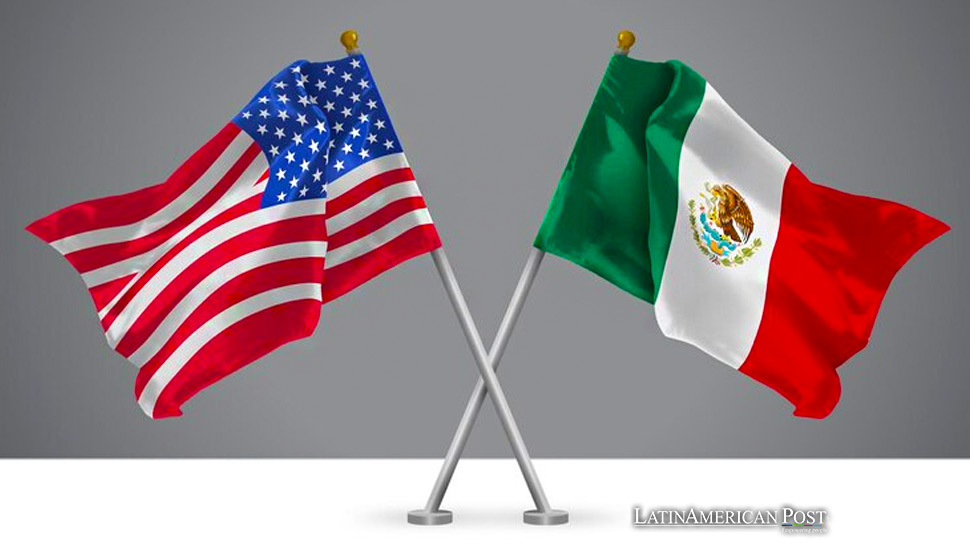US-Mexico New Semiconductor Pact is a Strategic Tech Alliance Against China

The United States and Mexico forge a semiconductor value chain partnership, countering China’s tech surge and reinforcing North American technological sovereignty, marking a significant shift in global tech dynamics.
The United States State Department recently unveiled a partnership with Mexico to explore opportunities in the semiconductor value chain. This move, part of the broader strategy of the Biden Administration, seeks to fortify the U.S. position in a sector deemed critical for maintaining global technological supremacy, particularly against China’s growing influence.
The partnership aligns with the International Technology Security and Innovation Fund (ITSI), established by the 2022 law, to bolster investment and development in the strategically vital semiconductor technology. The initial phase of this collaboration will assess Mexico’s regulatory framework and ecosystem, workforce, and infrastructure needs, setting the stage for an integrated North American semiconductor strategy.
The U.S. will work closely with Mexico’s Ministry of Economy, state governments, academic institutions, and research centers. This collaborative assessment aims to lay the groundwork for future growth initiatives, leveraging the North American Free Trade Agreement (T-MEC) and the High-Level Economic Dialogue between Mexico and Washington. These initiatives are expected to enhance the North American supply chains, which are crucial for the digital transformation and manufacturing demands in critical sectors like automotive and medical equipment.
Strategic Investments: Bolstering Supply Chains
The ITSI fund allocates $500 million over five years for the State Department to promote international collaborations with trade partners, ensuring the supply of raw materials and technology in the semiconductor and telecommunications sectors. This year, Mexico surpassed China as the top source of U.S. imports, a shift influenced by the U.S.-China trade war and heightened tensions in the tech sector, including bans on advanced technology from Chinese firms like Huawei and electric vehicles.
This U.S.-Mexico partnership reflects a broader trend in Latin America, where countries are increasingly viewed as pivotal players in the global tech and manufacturing arenas. The semiconductor alliance is a bilateral move and part of a larger geopolitical strategy to diversify and secure supply chains away from China’s dominance.
With their growing tech industries and strategic geographical locations, Latin American countries are becoming crucial nodes in the global technology supply chain. Nations like Brazil and Argentina are also enhancing their tech sectors, focusing on software development, bio-tech, and renewable energy technologies. These developments highlight the region’s potential to contribute significantly to the global tech landscape.
The partnership between the U.S. and Mexico could serve as a model for similar agreements in Latin America, fostering regional tech growth and integration into global value chains. This strategy aligns with the U.S. aim to strengthen ties with Latin American countries, promoting economic development and technological innovation to counter China’s influence.
In the context of the U.S.-China tech rivalry, Latin America’s role is becoming increasingly significant. The continent offers an alternative source for tech manufacturing and raw materials, which are crucial for semiconductor production. For example, countries like Chile, with its vast lithium reserves, are critical to the battery and electronics industries, sectors heavily reliant on semiconductors.
Reshaping the Tech Landscape: A Crucial Moment
The U.S.-Mexico semiconductor partnership, therefore, is more than a bilateral agreement; it’s a strategic move in the global tech chessboard, positioning Latin America as a vital player in reshaping the world’s tech supply chains. This alliance aims to enhance North America’s technological capabilities and integrate Latin American countries into a more robust, diversified global tech infrastructure.
This strategic partnership is expected to create jobs, spur economic growth, and foster innovation in Mexico and potentially across Latin America, showcasing the region’s rising importance in the global technology sector. It underlines the need for strategic alliances in today’s geopolitical landscape, where technology and innovation are at the forefront of economic and security considerations.
The semiconductor sector’s growth in Latin America, catalyzed by the U.S.-Mexico agreement, could inspire similar regional initiatives, leading to a more interconnected and technologically advanced hemisphere. This is a crucial moment for Latin America, as it positions itself as a critical player in the global technology arena, reshaping its economic and strategic trajectory.
Also read: Mexico’s Economic Recovery and Digital Transformation
The U.S.-Mexico semiconductor partnership is a pivotal development in global tech relations, signaling a shift towards greater North American and Latin American collaboration in the face of China’s technological ascendancy. It underscores the strategic importance of Latin America in the global technology landscape, heralding a new era of tech-driven diplomacy and economic development in the region.




